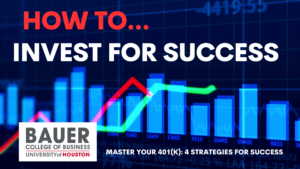What is Market Cap
Market Cap according to Investopedia.
Market Cap is Market Capitalization and it refers to the total dollar Market Value of a company’s outstanding shares of stock. Commonly referred to as “Market Cap,” it’s calculated by multiplying the total number of a company’s outstanding shares by the current Market price of one share.
For example, a company with 10 million shares selling for $100 each would have a Market Cap of $1 billion. The investment community uses this figure to determine a company’s size, as opposed to sales or total asset figures. In an acquisition, the Market Cap is used to determine whether a takeover candidate represents a good Value or not to the acquirer.
Market Cap Key Points
-
Market Cap refers to how much a company is worth as determined by the Stock Market. It is defined as the total Market Value of all outstanding shares.
-
To calculate a company’s Market Cap, multiply the number of outstanding shares by the current Market Value of one share.
-
Companies are typically divided according to Market Cap: large-Cap ($10 billion or more), mid-Cap ($2 billion to $10 billion), and small-Cap ($300 million to $2 billion).
Understanding Market Cap
Understanding what a company is worth is an important task and often difficult to quickly and accurately ascertain. Market Cap is a quick and easy method for estimating a company’s Value by extrapolating what the Market thinks it is worth for publicly traded companies. In such a case, simply multiply the share price by the number of available shares.
Using Market Cap to show the size of a company is important because company size is a basic determinant of various characteristics in which investors are interested, including risk. It is also easy to calculate. A company with 20 million shares selling at $100 a share would have a Market Cap of $2 billion. A second company with a share price of $1,000 but only 10,000 shares outstanding, on the other hand, would only have a Market Cap of $10 million.
A company’s Market Cap is first established via an initial public offering (IPO). Before an IPO, the company that wishes to go public enlists an investment bank to employ valuation techniques to derive a company’s Value and to determine how many shares will be offered to the public and at what price. For example, a company whose IPO Value is set at $100 million by its investment bank may decide to issue 10 million shares at $10 per share or they may equivalently want to issue 20 million at $5 a share. In either instance, the initial Market Cap would be $100 million.
After a company goes public and starts trading on the exchange, its price is determined by supply and demand for its shares in the Market. If there is a high demand for its shares due to favorable factors, the price would increase. If the company’s future growth potential doesn’t look good, sellers of the stock could drive down its price. The Market Cap then becomes a real-time estimate of the company’s Value.
The formula for Market Cap is:
Market Cap = share price x # shares outstanding
Market Cap and Investment Strategy
Given its simplicity and effectiveness for risk assessment, the Market Cap can be a helpful metric in determining which stocks you are interested in, and how to diversify your portfolio with companies of different sizes.
Large-Cap (aka big-Cap) companies typically have a Market Cap of $10 billion or more. These companies have usually been around for a long time, and they are major players in well-established industries. Investing in large-Cap companies does not necessarily bring in huge returns in a short period of time, but over the long run, these companies generally reward investors with a consistent increase in share Value and dividend payments.
Large Cap Examples
Examples of large-Cap companies—and keep in mind that this is an ever-changing sample—are Apple Inc., Microsoft Corp., and Google parent Alphabet Inc.
Mid-Cap companies generally have a Market Cap of between $2 billion and $10 billion. Mid-Cap companies are established companies that operate in an industry expected to experience rapid growth. Mid-Cap companies are in the process of expanding. They carry an inherently higher risk than large-Cap companies because they are not as established, but they are attractive for their growth potential. One example of a mid-Cap company is Eagle Materials Inc. (EXP).
Companies that have a Market Cap of between $300 million to $2 billion are generally classified as small-Cap companies. These small companies could be younger and/or they could serve niche Markets and new industries. These companies are considered higher-risk investments due to their age, the Markets they serve, and their size.4 Smaller companies with fewer resources are more sensitive to economic slowdowns.
As a result, small-Cap share prices tend to be more volatile and less liquid than more mature and larger companies. At the same time, small companies often provide greater growth opportunities than large Caps. Even smaller companies are known as micro-Cap, with Values between approximately $50 million and $300 million.
In order to make an investment decision, you may need to factor in the Market Cap of some investments.
Misconceptions About Market Caps
Although it is used often to describe a company, the Market Cap does not measure the equity Value of a company. Only a thorough analysis of a company’s fundamentals can do that. It is inadequate to Value a company because the Market price on which it is based does not necessarily reflect how much a piece of the business is worth. Shares are often over- or underValued by the Market, meaning the Market price determines only how much the Market is willing to pay for its shares.
Although it measures the cost of buying all of a company’s shares, the Market Cap does not determine the amount the company would cost to acquire in a merger transaction. A better method of calculating the price of acquiring a business outright is the enterprise Value.
Changes in Market Cap
Two main factors can alter a company’s Market Cap: significant changes in the price of a stock or when a company issues or repurchases shares. An investor who exercises a large number of warrants can also increase the number of shares on the Market and negatively affect shareholders in a process known as dilution.
What Is Market Cap?
Market Cap refers to the Market Value of a company’s equity. It is a simple but important measure that is calculated by multiplying a company’s shares outstanding by its price per share. For example, a company priced at $20 per share and with 100 million shares outstanding would have a Market Cap of $2 billion.
Is It Better to Have a Large Market Cap?
There are advantages and drawbacks to having a large Market Cap. On the one hand, larger companies might be able to secure better financing terms from banks and by selling corporate bonds. Also, these companies might benefit from competitive advantages related to their sizes, such as economies of scale or widespread brand recognition.
On the other hand, large companies might have limited opportunities for continued growth, and may therefore see their growth rates decline over time.
Market Cap Summary
Market Cap can be a valuable tool for an investor who is watching stocks and evaluating potential investments. Market Cap is a quick and easy method for estimating a company’s Value by extrapolating what the Market thinks it is worth for publicly traded companies. The investment community uses this figure to determine a company’s size, as opposed to using sales or total asset figures. In an acquisition, the Market Cap is used to determine whether a takeover candidate represents a good Value or not to the acquirer.






